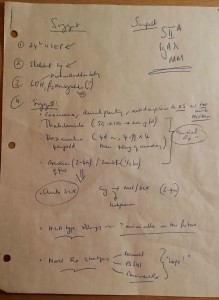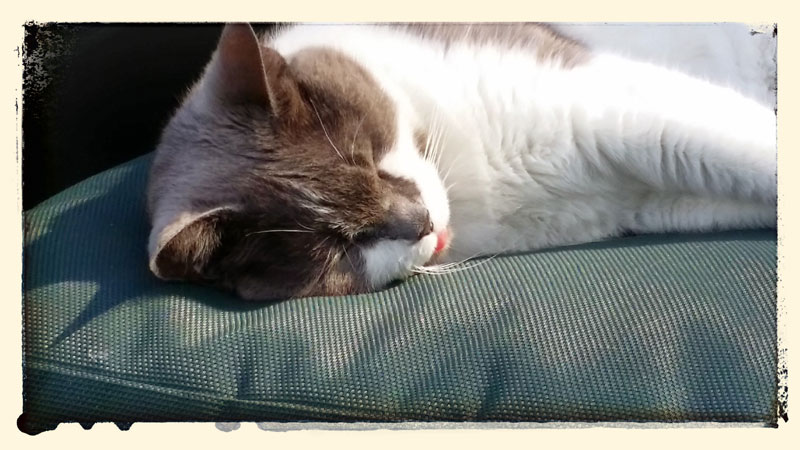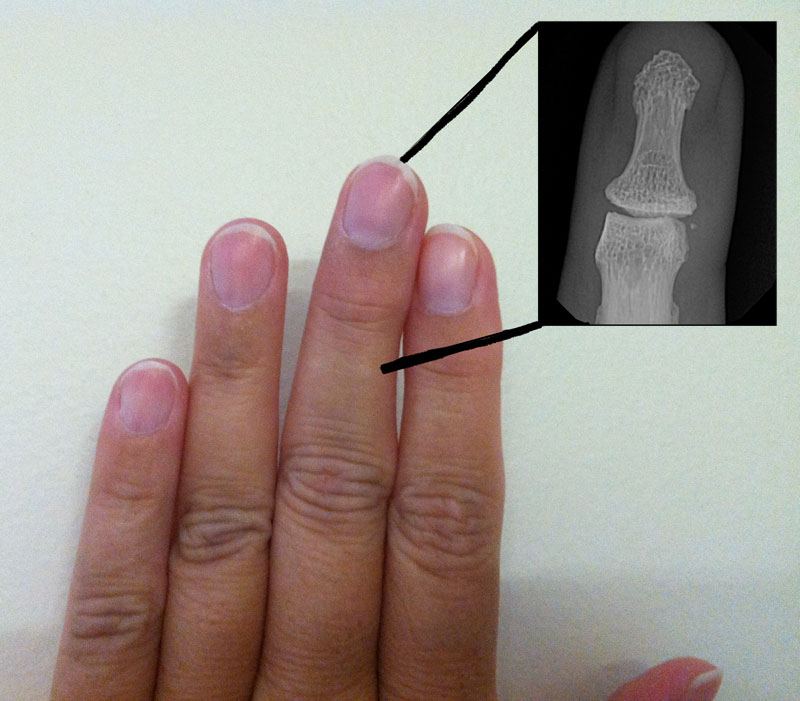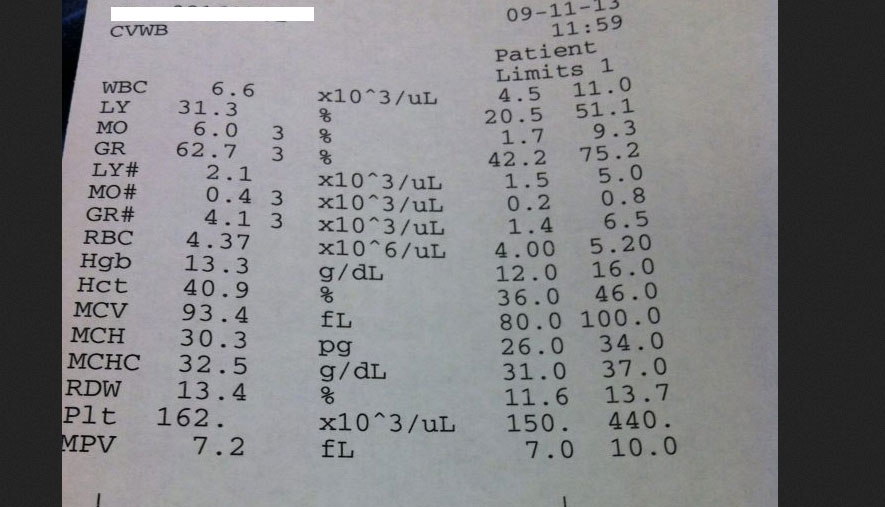This is my cat, Peeps, taking a snooze on the back porch on a sunny October day. Peeps has been with me for a few years now. She showed up at my house one winter. I called her Peeps because she used to stand up at the door and peep into the house through the windows. She ran away from me whenever I tried to approach her at first. Not anymore! Now she comes running whenever she sees me or when I call for her. She’s an amazing and wonderful cat!
|
These are the latest test results.
IgM
25 mg/dL (40-230)
IgG
410 mg/dL (700-1600)
IgA
961 mg/dL (91-414)
FLC with ratio
Kappa: 0.14 mg/dL (0.33-1.94)
Lambda: 3.15 mg/dL (0.57-2.63)
K/L free ratio: 0.04 (0.26-1.65)
CBC w/differential
| WBC | 6.8 | 4.5-11.0 | x(10)3/microL |
| Lymphocytes % | 42.8 | 20.5-51.1 | % |
| Monocytes % | 5.3 | 1.7-9.3 | % |
| Granulocytes % | 51.9 | 42.2-75.2 | % |
| Lymphocytes # | 2.9 | 1.5-5.0 | x(10)3/microL |
| Monocytes # | 0.4 | 1.7-9.3 | x(10)3/microL |
| Granulocytes # | 3.5 | 1.4-6.5 | x(10)3/microL |
| RBC | 4.08 | 4.00-5.20 | x(10)6/microL |
| Hemoglobin | 12.9 | 12.0-16.0 | mg/dL |
| Hematocrit | 37.0 | 36.0-46.0 | % |
| MCV | 90.6 | 80.0-100.0 | fL |
| MCH | 31.6 | 26.0-34.0 | pg |
| MCHC | 34.9 | 31.0-37.0 | mg/dL |
| RDW | 13.4 | 11.6-13.7 | % |
| Platelets | 189 | 150-440 | x(10)3/microL |
| MPV | 6.5 | 7.0-10.0 | fL |
Other stuff
Beta-2 microglobulin
1.8 mg/L (Normal range is 1.1-2.4)
Serum Protein Electrophoresis
| Total protein | 6.7 | 6.0-8.5 | gm/dL |
| Albumin | 3.8 | 3.2-5.6 | gm/dL |
| Alpha-1-globulin | 0.2 | 0.1-0.4 | gm/dL |
| Alpha-2-globulin | 0.6 | 0.4-1.2 | gm/dL |
| Beta globulin | 1.1 | 0.6-1.3 | gm/dL |
| Gamma globulin | 1.0 | 0.5-1.6 | gm/dL |
| M-spike 1 | 0.4 | gm/dL | |
| M-spike 2 | 0.3 | gm/dL | |
| Globulin, total | 2.9 | 2.0-4.5 | gm/dL |
| A/G ratio | 1.4 | 0.7-2.0 |
Comprehensive Metabolic Panel
| Sodium | 137 | 136-144 | mmol/L |
| Potassium | 3.8 | 3.6-5.1 | mmol/L |
| Chloride | 107 | 101-111 | mmol/L |
| CO2 | 23 | 22-32 | mmol/L |
| Random glucose | 89 | 65-140 | mg/dL |
| BUN | 14 | 8-26 | mg/dL |
| Creatinine | 0.57 | 0.4-1.0 | mg/dL |
| eGFR | >60 2 | ||
| Calcium | 8.9 | 8.9-10.3 | mg/dL |
| Albumin | 3.9 | 3.5-5.0 | gm/dL |
| Protein, total | 7.0 | 6.5-8.1 | gm/dL |
| Alkaline Phosphatase | 89 | 50-86 | Units/L |
| ALT (SGPT) | 37 | 14-54 | Units/L |
| AST (SGOT) | 29 | 10-41 | Units/L |
| Bilirubin, total | 0.6 | 0.4-2.0 | mg/dL |
| Anion gap | 7.2 |
I was going through papers a few nights ago, when I discovered the handwritten notes that Dr. Richardson (Dana-Farber) had written while I sat in an exam room, there in Boston, in March of 2003. That was 11 years ago. I remember him telling me, “We hope to get you to your 50th birthday — and beyond.” At the time, I was 41 years old. 9 years seemed like a long time. Well, that 9 years has come and gone. I’ve known about my myeloma for more than 11 years now, and have been treatment free since 2007. With the exception of quarterly Zometa.
 What have I learned in the last 11 years? Lots of things. Most important among them is that no two people will have identical experiences with their myeloma disease process or treatment in the aggregate.
What have I learned in the last 11 years? Lots of things. Most important among them is that no two people will have identical experiences with their myeloma disease process or treatment in the aggregate.
If someone asks me what a stem cell transplant is like, I can only tell them about MY experience. Even if you have IgA lambda MM, and start off with the same lab values I had, and then use the exact same treatments I did, I doubt that you’d have the same experiences or outcomes. We’re just all different. When people ask me what I did to last so long, all I can say is, “I have no idea.” Is it because I waited, and had the SCT later? I don’t know!
The second most important thing I’ve learned is that no other patient or caregiver is the expert, where I’m concerned. Nobody can tell me anything I already don’t know about how to live with my myeloma. At first, I was scared of treatment side effects and procedures. I wanted to know what other people thought and did. I frequently asked, over and over again, things such as, “What do you do for your peripheral neuropathy?” And, “Do you have a sedative before your bone marrow biopsies?” The answers to these questions did help me at first. I had to find my own way, though. I’ve been lucky enough to live long enough to keep trying different things.
At this point, I’m annoyed by people who push their opinions about the “best way” to do this or that. It’s good to know about all of your options. Just remember that no other person has your best interest in mind the way you do, or the way your loved ones would. And, sometimes, you’re going to disagree with even them. Heck, yeah!
I guess I’m just trying to say that there’s no easy answer to the questions you have about what to do when you find out you have myeloma.
Here’s a short list of some things that I’ve found helpful over the years.
- When you’re on chemo, take the anti-emetics your doctor prescribes. If they’re not working for you, ask for something different. Don’t stop bugging your treatment team until you get something that helps.
- Likewise, if you have pain, keep agitating for relief.
- For covering a Hickman or Neostar central venous catheter for showering, Glad Press-n-Seal is the best!
- Get plenty of rest and drink plenty of fluids. Make sure your doctor recommends proper fluid intake for you, especially if you have impaired kidney function.
- Have fun as much as is possible for you. Just don’t hurt yourself.
- Try to laugh.
Hang in there, everyone.
The article is called “Analysis of the immune system of multiple myeloma patients achieving long-term disease control by multidimensional flow cytometry.” It makes me think they mean long-term disease control was achieved by flow cytometry. That would be pretty awesome. They really mean that the analysis was done using MFC.
http://www.ncbi.nlm.nih.gov/pmc/articles/PMC3533663/
Highlights (determined by me)
Multiple myeloma remains largely incurable. However, a few patients experience more than 10 years of relapse-free survival and can be considered as operationally cured. Interestingly, long-term disease control in multiple myeloma is not restricted to patients with a complete response, since some patients revert to having a profile of monoclonal gammopathy of undetermined significance.
My comments: How can the monoclonal gammopathy be characterized as being of undetermined significance, when the pt has had MM? Obviously, there is a significance. I’m just picking. I know what they mean. It’s good to see that they’re asserting that complete response is not required. I have never had that. I think people put too much emphasis on it.
In summary, our results indicate that multiple myeloma patients with long-term disease control have a constellation of unique immune changes favoring both immune cytotoxicity and recovery of B-cell production and homing, suggesting improved immune surveillance.
My Comments: None, really. I just like the word constellation. :) Dr. Peterson used to use that word a lot.
Despite the fact that until recently MM was considered incurable, the introduction of high dose therapy/autologous stem cell transplantation and novel drugs has made it possible for a small fraction of patients to attain long-term (?5 years) disease control even in the absence of a complete response, after reverting to having an MGUS-like profile. The underlying mechanisms leading to disease suppression in these patients are largely unknown, although immune surveillance has been hypothesized to play a critical role.
My Comments: This is me, in a nutshell. The small fraction.
These are the latest test results.
IgM
25 mg/dL (60-263)
IgG
411 mg/dL (768-1632)
IgA
891 mg/dL (68-378)
FLC with ratio
Kappa: 0.15 mg/dL (0.33-1.94)
Lambda: 2.60 mg/dL (0.57-2.63)
K/L free ratio: 0.06 (0.26-1.65)
CBC w/differential
| WBC | 6.6 | 4.5-11.0 | x(10)3/microL |
| Lymphocytes % | 31.3 | 20.5-51.1 | % |
| Monocytes % | 6.0 | 1.7-9.3 | % |
| Granulocytes % | 62.7 | 42.2-75.2 | % |
| Lymphocytes # | 2.1 | 1.5-5.0 | x(10)3/microL |
| Monocytes # | 0.4 | 1.7-9.3 | x(10)3/microL |
| Granulocytes # | 4.1 | 1.4-6.5 | x(10)3/microL |
| RBC | 4.37 | 4.00-5.20 | x(10)6/microL |
| Hemoglobin | 13.3 | 12.0-16.0 | mg/dL |
| Hematocrit | 40.9 | 36.0-46.0 | % |
| MCV | 93.4 | 80.0-100.0 | fL |
| MCH | 30.3 | 26.0-34.0 | pg |
| MCHC | 32.5 | 31.0-37.0 | mg/dL |
| RDW | 13.4 | 11.6-13.7 | % |
| Platelets | 162 | 150-440 | x(10)3/microL |
| MPV | 7.2 | 7.0-10.0 | fL |
Other stuff
Beta-2 microglobulin
1.6 mg/L (Normal range is 1.1-2.4)
Serum Protein Electrophoresis
| Total protein | 6.7 | 6.0-8.5 | gm/dL |
| Albumin | 4.0 | 3.2-5.6 | gm/dL |
| Alpha-1-globulin | 0.2 | 0.1-0.4 | gm/dL |
| Alpha-2-globulin | 0.5 | 0.4-1.2 | gm/dL |
| Beta globulin | 1.1 | 0.6-1.3 | gm/dL |
| Gamma globulin | 1.0 | 0.5-1.6 | gm/dL |
| M-spike | 0.3 | gm/dL | |
| Globulin, total | 2.7 | 2.0-4.5 | gm/dL |
| A/G ratio | 1.5 | 0.7-2.0 |
Comprehensive Metabolic Panel
| Sodium | 139 | 136-144 | mmol/L |
| Potassium | 4.0 | 3.6-5.1 | mmol/L |
| Chloride | 107 | 101-111 | mmol/L |
| CO2 | 23 | 22-32 | mmol/L |
| Random glucose | 106 | 65-140 | mg/dL |
| BUN | 12 | 8-26 | mg/dL |
| Creatinine | 0.72 | 0.4-1.0 | mg/dL |
| eGFR | >60 2 | ||
| Calcium | 9.0 | 8.9-10.3 | mg/dL |
| Albumin | 3.9 | 3.5-5.0 | gm/dL |
| Protein, total | 7.2 | 6.5-8.1 | gm/dL |
| Alkaline Phosphatase | 95 | 50-86 | Units/L |
| ALT (SGPT) | 51 | 14-54 | Units/L |
| AST (SGOT) | 34 | 10-41 | Units/L |
| Bilirubin, total | 0.7 | 0.4-2.0 | mg/dL |
| Anion gap | 8.5 |
I’m curious if anyone’s ever seen anything like this. I know it’s not related to myeloma. It’s more likely related to an injury I had when I was a teenager. I just can’t remember anything happening to this finger recently.
What happens is, it’s a little bit sore at the knuckle. There’s a bump there, on top, which you can’t really see from this view.
These are the distal and middle phalanxes of the left hand’s middle finger. There should be space between the two bones. Yes, I asked my doctor about this, and have completely forgotten what she said, except that there’s nothing to be done about it.
Anyway, it’s sort of fun just to see kind of what we look like on the inside. Except for when blood is involved, I say.


